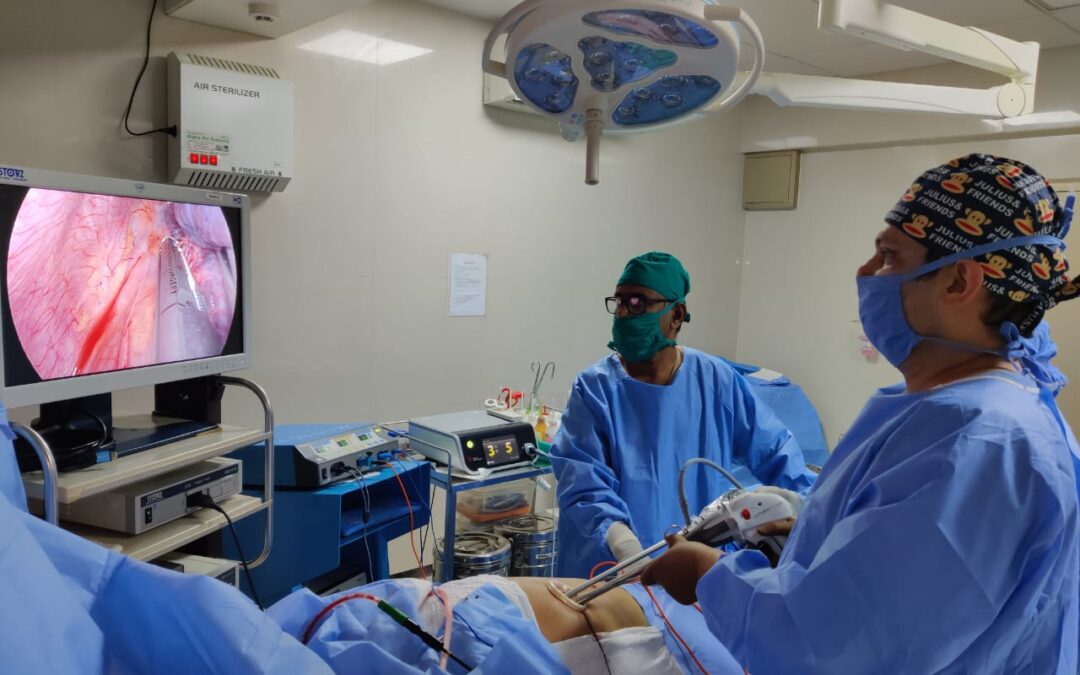Learning about thoracic surgery is very important. It involves understanding different kinds of operations, how they’re done carefully, and what happens afterwards to help people get better. This guide helps explain thoracic surgery. It talks about the different types of operations in this area, how each one is done, and what’s important for people’s recovery. Thoracic surgery covers a lot of things, like removing lung tumours and restoring collapsed lungs. It’s crucial for both patients and healthcare providers to know all about thoracic surgery, including how the surgeries are done and what to expect during recovery afterwards.
Understanding Thoracic Surgery
Thoracic surgery involves operations within the chest (thorax), addressing various conditions affecting organs such as the lungs, thymus, trachea, diaphragm, and chest wall. Surgeons perform these procedures using either open or minimally invasive techniques.
Types of Thoracic Surgery
- Open Surgery vs. Minimally Invasive Surgery: Open surgery involves larger incisions, while minimally invasive approaches utilize smaller incisions with the assistance of video cameras and specialized instruments. Techniques such as VATS (Video-Assisted Thoracic Surgery) or Thoracoscopic surgery are common for minimally invasive procedures.
- Robot-Assisted Surgery: Robotic systems are sometimes used by surgeons to help with procedures that are minimally invasive, which improves precision while giving the surgeon complete control.
Conditions Treated
Thoracic surgery addresses a range of conditions, including:
- Lung diseases, including lung cancer and infections
- Accumulation of air and/or pus around the lung
- Myasthenia gravis
- Esophageal disorders, such as swallowing issues and reflux disease
- Tumors in various chest organs
- Diaphragmatic disorders
Common Procedures
- Decortication: Decortication is a procedure to remove thick pus and thickened pleura over the lung, thereby allowing it to re-expand completely.
- Lobectomy: This involves removing a portion of the lung and is often performed to treat lung cancer or other lung conditions.
Understanding the Seriousness
Thoracic surgeries are significant procedures due to the critical nature of the organs involved. Surgeons and healthcare teams prioritize patient safety and strive for optimal outcomes, whether performing complex surgeries or minimally invasive lung procedures.
Preparing for Surgery
Preparation involves various steps, including:
- Providing details of medications to your healthcare provider
- Stopping certain medications as advised
- Ceasing tobacco use before lung surgery
- Following dietary instructions before surgery
- Making post-operative arrangements for recovery support
During the Procedure
Once under anaesthesia, the surgeon makes necessary incisions and performs the required repairs or removals. Continuous monitoring ensures safety throughout the surgery, with attention to managing bleeding and closing incisions post-operation.
Thoracic surgery plays a crucial role in treating a wide range of conditions, with advancements in techniques ensuring improved outcomes and patient well-being. Through careful preparation and skilled intervention, thoracic surgeons contribute to restoring health and enhancing the quality of life for their patients.
Recovery After Thoracic Surgery
- Post-Operative Care: Following thoracic surgery, your recovery journey begins:
- Initial Recovery: You’ll awaken in a recovery room or intensive care unit, where healthcare providers will remove your breathing tube. Tubes in your chest for drainage and a catheter in your bladder for urine collection may also be present.
- Transition to Regular Room: Once deemed stable, you’ll be transferred to a standard hospital room.
- Mobility and Breathing Exercises: With assistance, you’ll start walking around your room and hallway. Breathing exercises may also be introduced to aid lung re-expansion.
- Discharge: Upon meeting set recovery milestones, typically within three to 7 days, depending on the surgery type, you’ll be discharged home.
Advantages and Risks
- Advantages of Thoracic Surgery: Thoracic procedures can significantly impact your health and quality of life by addressing lung, or swallowing issues, potentially extending or saving your life.
- Risks and Complications: Thoracic surgery carries inherent risks, including infections, lung collapse, blood clots, and swelling in the lungs (pulmonary oedema).
Recovery Timeline
- Duration: Recovery time varies based on the surgery type. While some may spend a week in the hospital, minimally invasive procedures may require only three to four days. It can take a month or more to fully recover.
- Driving and Work: Resuming driving and work depends on the surgery type. Driving restrictions may last up to a month, and lifting limits may extend for six weeks post-surgery.
When to Seek Medical Attention
- Contacting Your Provider: Reach out to your healthcare provider if you experience chest pain, shortness of breath, bleeding, incision issues, or fever.
- Comprehensive Approach: Thoracic surgery encompasses various procedures tailored to individual needs, ranging from straightforward to complex. Surgeons employ open or minimally invasive methods, selecting the most suitable option for each case. Don’t hesitate to seek clarification from your healthcare team about any aspect of your procedure to ease apprehensions and ensure informed decision-making.
In Summary
Becoming really good at thoracic surgery needs a mix of knowing a lot, doing things very carefully, and caring about patients. This guide has explained all the different types of surgeries in this area, like fixing and removing parts of the lungs, and helping with various problems. Knowing how each surgery works, how to do it right, and how to take care of patients afterwards is super important for doctors who focus on this kind of surgery.
By stressing how important it is to know a lot, do things carefully, and take good care of patients after surgery, this guide helps both doctors and patients understand what to expect during thoracic surgery. As new technology and techniques change how thoracic surgery is done, always learning and getting better is key to giving patients the best care and results possible. Further, if you have any doubts or queries you can contact Dr. Amol Bhanushali’s Center for Lung Surgery and get your doubts cleared.

